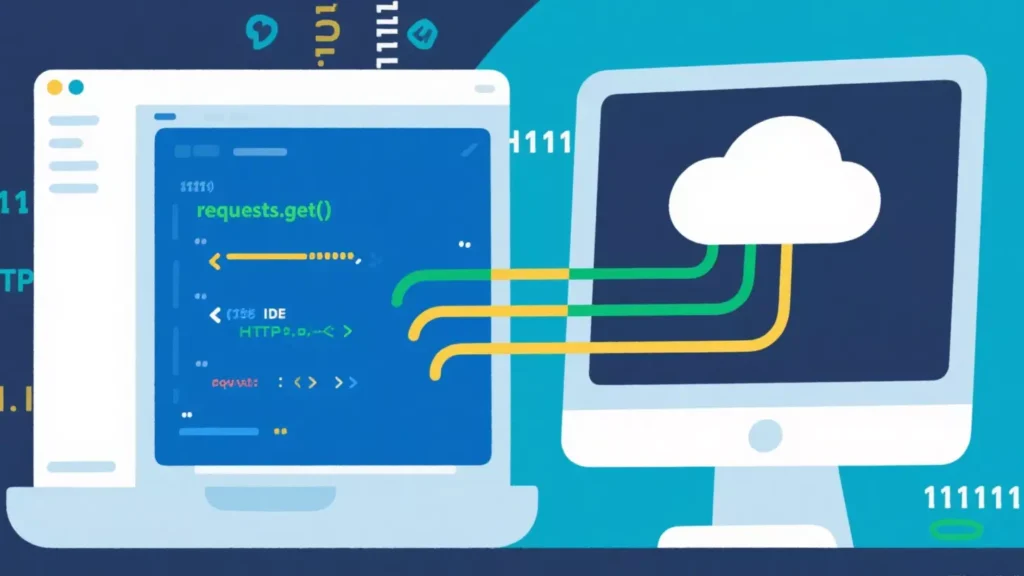Web scraping is a powerful technique for extracting data from websites. Whether you are collecting product information, monitoring competitor prices, or analyzing social media trends, Python offers an accessible yet robust set of tools for scraping data efficiently. This tutorial will guide you step by step through the process of Python web scraping, covering everything from setting up your environment to handling dynamic websites.

What Is Web Scraping?
Web scraping is the automated process of extracting information from websites. Unlike APIs, which provide structured data through predefined endpoints, web scraping allows you to access data directly from the web pages themselves. This makes scraping a versatile method for gathering data, particularly when an API is unavailable or limited.
Python is widely used for web scraping due to its simplicity and powerful libraries such as BeautifulSoup, Requests, and Selenium. These libraries enable both beginners and professionals to scrape data efficiently, cleanly, and safely.
Setting Up Your Python Environment
Before starting, ensure you have Python installed. The recommended version is Python 3.7 or later. You can check your Python version by running:
python --version
Next, create a virtual environment to manage your scraping project dependencies:
python -m venv scraping_envsource scraping_env/bin/activate # Linux/Macscraping_env\Scripts\activate # Windows
Install the essential libraries for web scraping:
pip install requests beautifulsoup4 pandas selenium
- Requests handles HTTP requests to fetch web pages.
- BeautifulSoup parses HTML and extracts data.
- Pandas helps store scraped data in structured formats like CSV.
- Selenium is used for dynamic websites that require interaction or JavaScript rendering.
Step 1: Sending HTTP Requests
The first step in web scraping is fetching the content of a webpage using an HTTP request. With the requests library, this is straightforward:
import requests url = "https://example.com/products"response = requests.get(url) if response.status_code == 200:print("Page fetched successfully!") html_content = response.textelse:
print("Failed to retrieve the page")
It’s important to always check the HTTP status code to ensure the page has loaded correctly.
Step 2: Parsing HTML with BeautifulSoup
Once the webpage content is fetched, the next step is parsing it to locate the data you want. BeautifulSoup allows you to navigate the HTML structure easily:
from bs4 import BeautifulSoup
soup = BeautifulSoup(html_content, "html.parser") products = soup.find_all("div", class_="product-item") for product in products: title = product.find("h2").text price = product.find("span", class_="price").text
print(title, price)
BeautifulSoup supports searching by tag, class, id, or even CSS selectors. This flexibility is essential for extracting data from diverse website structures.
Step 3: Storing Scraped Data
After extracting the required data, it’s crucial to save it for further analysis. Pandas provides an easy way to store data in CSV or Excel formats:
import pandas as pd
data = [] for product in products: title = product.find("h2").text price = product.find("span", class_="price").text data.append({"Title": title, "Price": price})
df = pd.DataFrame(data) df.to_csv("products.csv", index=False)
By storing your data in a structured format, you can perform analysis, visualization, or feed it into machine learning models.
Step 4: Handling Dynamic Websites with Selenium
Some websites load content dynamically using JavaScript, which requests and BeautifulSoup cannot handle directly. Selenium automates a web browser to render JavaScript and interact with web elements:
from selenium import webdriverfrom selenium.webdriver.common.by import By
driver = webdriver.Chrome() driver.get("https://example.com/products")
products = driver.find_elements(By.CLASS_NAME, "product-item") for product in products: title = product.find_element(By.TAG_NAME, "h2").text price = product.find_element(By.CLASS_NAME, "price").text
print(title, price)
driver.quit()
Selenium can also simulate scrolling, clicking buttons, or logging in, enabling scraping of more complex websites.
Step 5: Respecting Website Policies

Web scraping can be powerful, but it’s important to use it responsibly:
- Check the robots.txt file – This file defines which pages can be crawled by automated scripts.
- Avoid overloading servers – Introduce delays between requests to prevent server strain.
- Use proxies if needed – For websites with strict IP restrictions, rotating proxies can help maintain uninterrupted access. Providers like IPFLY offer reliable residential and datacenter proxies to support high-volume scraping without triggering blocks.
Step 6: Advanced Scraping Techniques
- Pagination – Loop through multiple pages to scrape all items.
- API Scraping – Some websites use JSON endpoints that are faster and cleaner to scrape.
- Data Cleaning – Normalize and clean scraped data to remove HTML tags, extra spaces, or inconsistent formats.
- Automation – Combine Python scripts with schedulers like
cronto run scraping at regular intervals.
Conclusion

Web scraping with Python provides a flexible, efficient, and accessible way to collect data from the web. By combining Requests, BeautifulSoup, Pandas, and Selenium, users can handle everything from static pages to complex dynamic websites.
Using high-quality proxies like IPFLY ensures stable access when scraping websites with geographic restrictions or heavy traffic, safeguarding your data pipelines and maintaining consistent scraping performance.
Whether for business analytics, research, or personal projects, mastering Python web scraping opens a world of possibilities for data-driven decision-making.
Call to Action: Start building your Python web scraping projects today and ensure reliable access with IPFLY proxies. Join their Telegram channel for tips and updates.


